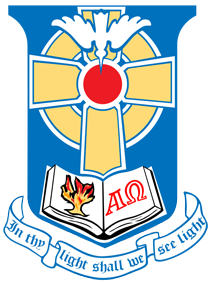An Associate Reformed Presbyterian Church in Irmo
Very simply, "Presbyterian" comes from a Greek word (presbuteros) meaning "elder" which the New Testament recognizes as being the office of leadership within the church. It is an office that is not to be held by one man in the church but several. Therefore, as Presbyterians, we believe in a plurality of leadership in the church instead of a single centralized power. There is no hierarchal "top-down" structure in the Presbyterian church. Each congregation elects for itself elders - men within that local church family - who meet the Biblical qualifications of leadership we find in 1 Timothy 3:1-7 and Titus 1:5-9.
Even the "session" of elders in a local church are accountable to a higher court of elders from all the local churches within their particular region and that court is called a "Presbytery." The highest court within the Associate Reformed Presbyterian Church is called the "General Synod" and it is comprised of all the Presbyteries in the denomination.
The purpose of this form of church government is to be faithful to follow the biblical instructions we have in the New Testament of how Christ intends for his church to govern itself under his authority. The pattern the New Testament gives us is one of plurality of leadership (men leading together in the local church).
As a Reformed and Presbyterian church, we hold to the historical positions, statements of faith, and confessions of the British Refomers of the 17th Century known as the Westminster Standards (The Westminster Confession of Faith, Larger Catechism, Shorter Catechism, and Directory of Public Worship). We do not at all regard these documents as highly as Scripture which is the very Word of God, but they serve as helpful summaries of what Scripture teaches.
Another distinctive of being a Presbyterian church is we believe children born to believing parents are a part of God's covenant community in the visible church and are to be baptized. God promises blessings and benefits to his covenant people within the visible church of which children are a part. What we call the invisible church consists of all those truly united to God by faith in Christ and we believe that only happens by grace alone through faith alone in Christ alone. It is entirely the work of God's grace from start to finish and not received by baptism. We do not believe baptism should be administered to any that are outside of the visible church, till they profess their faith in Christ, and obedience to him; but the infants of such as are members of the visible church are to be baptized.
HISTORY OF THE ASSOCIATE REFORMED PRESBYTERIAN (ARP) CHURCH

The Associate Reformed Presbyterian Church as we know it today comes to us across a lengthy history of service in two lands, the British Isles and North America. It had its beginnings in the preaching of John Knox in Scotland when the Scottish Church became the official church of Scotland in 1560 A.D. As always the case when the church and state become too closely allied, controversy and bitter strife over control became a way of life for church and state alike
Things improved somewhat under King William III in 1688 A.D. as he reorganized the Church of Scotland into the Established Presbyterian Church of Scotland. In spite of the improvement, however, a great number of problems still existed, and in 1733 a pastor by the name of Ebenezer Erskine led a group of Christians in forming a separate Associate Presbytery (from thence comes the first part of our name). Ten years later, another group of Christians who for years had suffered problems with the established church organized themselves into the Reformed Presbytery.
Both churches spread to Northern Ireland as the Scots were forced to emigrate and both came to America with those “Scots-Irish” folks. The immigrants came to the Pennsylvania area at first, and it was there that both the Associate and the Reformed Presbyteries of Pennsylvania were organized in the 1750-1770 time period.
It was a heady time in the new world, and all the “old alliances” were being called into question. The new America was emerging and at the same time our forefathers were seeking to create a new church as well. Formal union talks between the “Associates” and the “Reformed” began in 1777 and by 1782 the Associate Reformed Synod came to be in Philadelphia. This Synod, even though all “Associates” and “Reformeds” did not join, included churches in Pennsylvania, New York, Ohio, North and South Carolina and Georgia.
Eight years later, the Associate Reformed Presbytery of the Carolinas and Georgia was formed in Abbeville County, S.C., followed some twenty years later (1803) by the division of the entire church into four Synods and one General Synod. The Synods were those of the Carolinas, Pennsylvania, New York and Scioto with the headquarters of the church in Philadelphia. In 1822 the Synod of the Carolinas was granted separate status, and by the end of the century was the sole remaining body of the Associate Reformed Presbyterian Church as several mergers over the years had absorbed the rest of the denomination into the old United Presbyterian Church. The remaining “A.R.P.s” in the Southeast continued on as the denomination we have today.